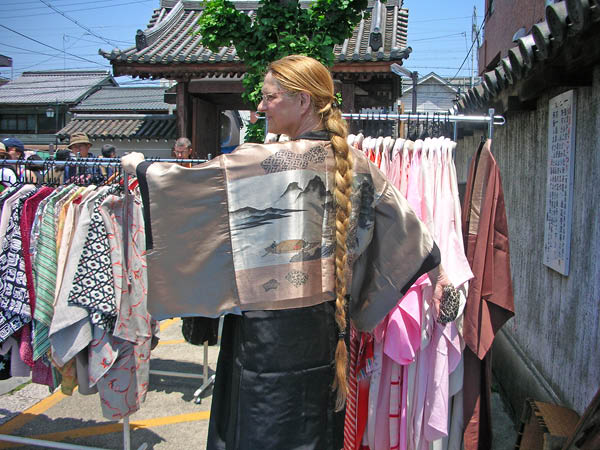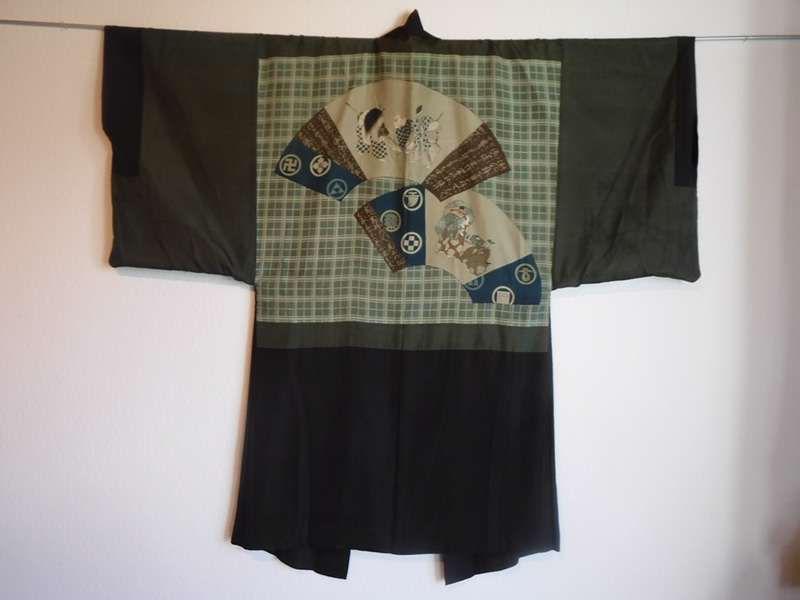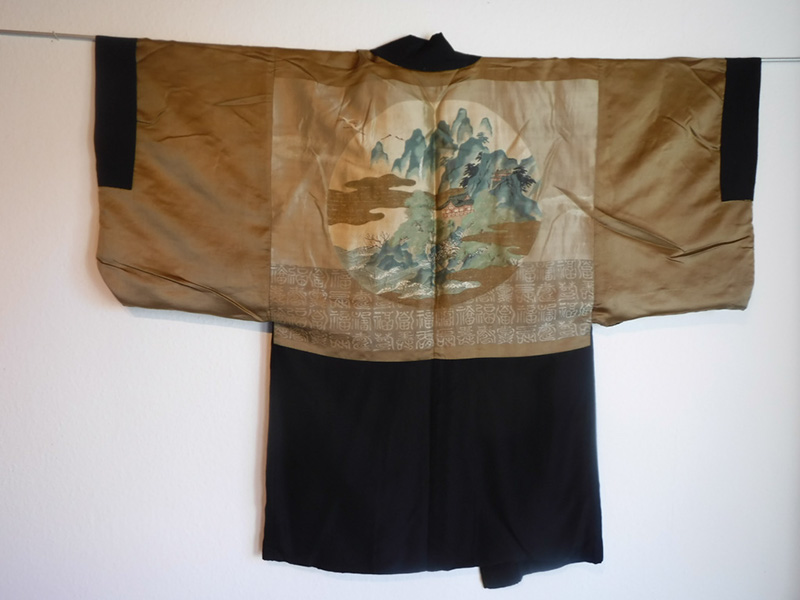Home | Intervention Overview | World Clothes for Equal Dignity | Japan
Clothesteam | Africa | China | Indonesia | Thailand | India | Gulf | Egypt | South America | Norway | Others
World Clothes for Equal Dignity
Japanese Collection
HumanDHS is primarily grounded in academic work. We are independent of any religious or political agenda. However, we wish to bring academic work into "real life." HumanDHS aims at increasing respect for equal dignity for all human beings in the world. This is our core value, in line with Article 1 of the Human Rights Declaration that states that every human being is born with equal dignity (that ought not be humiliated). Our World Clothes for Equal Dignity project is part of this quest. It envisions increasing respect for cultural variety in this world. When we look around today, we all wear more or less the same, Western, clothes.
Our World Clothes for Equal Dignity project is part of our quest to build bridges from social science to other areas of life.
When we look around today, we all wear more or less the same clothes, Western clothes. We, the HumanDHS group, believe that cultural diversity should receive more respect and attention, which, in the case of clothing, means that the diverse cultural heritage in clothing that we find around the world should be valued more and made more visible in day-to-day wear. At the current juncture in hisotry, traditional clothes are typically worn only to festive occasions. We wish to integrate this heritage into future-orientated innovative and creative design for day-to-day use.
An important point for HumanDHS is to deconstruct tradition, in this case traditional clothes design. We do not wish to accept everything as it is. Many aspects do not bolster our aim - equal dignity for all. Chinese footbinding is a drastic example of how women were intentionally mutilated and handicapped in order to fit into an image of feminity as cuteness and helplessness. We do not wish to preserve those aspects of tradition. Many clothes for women, both traditional and modern, carry "footbinding" aspects, in contrast to clothing made for males. Women typically can not breathe freely or walk forcefully. Corsets created a wasp waist that made women almost faint, Japanese kimonos and to a certain extent also Chinese qipaos have similar effects and hinder free movement, as do many modern clothes. Modern shoes make women walk in ways that signal fragility. Feminine beauty, elegance, and decency are conceptualized, in ways of méconnaissance and naturalization (Barthes, Bourdieu, Foucault), as lack of forcefulness. We wish to encourage women to opt for new definitions of beauty and elegance, definitions that lend them strength and power.
 Clearly, future-oriented design entails more than just design. It means also awareness for fair trade, respect for the people who produce products, in this case clothes, and more personalized relationships between products and users.
Clearly, future-oriented design entails more than just design. It means also awareness for fair trade, respect for the people who produce products, in this case clothes, and more personalized relationships between products and users.
Kimono constituted everyday wear for most Japanese women until Western clothing became popular in the postwar period. Please see Liza Dalby's Kimono (Yale University Press, 1993). These days, however, the garments are widely perceived as formal attire worn only on special occasions, consequently pushing prices very high.
But kimono are gradually making a comeback as affordable wardrobe options for women, especially among the younger generation, according to an article by Japan Times staff writer AKEMI NAKAMURA.
Please see also Kateigaho (International Edition, Japanese Arts and Culture Magazine, 2004, Summer), and their article Kimono Style for Men - Get the Knack of Samurai Chic. There you read, "Men in kimonos have once again captured the spotlight. Is the 'samurai spirit' still to be found deep in the hearts of Japanese men, inspiring today's interest in traditional attire? Five contemporary leaders show us their kimono style."
In the following, see Lindner's diary (starting in 1999) documenting her quest to find material in Japan that would be suitable to be used for the World Clothes for Equal Dignity project.
Used kimono
In 1999, at a conference in Belfast, I met with Audrey E. Kitagawa, a Japanese participant, who wore beautiful clothes that represented a combination of used kimono material and modern style. Audrey told me that her tailor was Anne Namba in Hawai'i and Anne would find used kimono in Japan, cut them up, and integrate the material into her modern clothes. I feel that Anne Namba, in her work, expresses the values and vision that also HumanDHS attempts to express in the World Clothes for Equal Dignity project.
Fleamarkets (2004)
Certain fleamarkets in Japan are known for their used kimono sales. However, even though these kimono are less expensive than in so-called "recycle shops," I found none so far that exhibited the distinctive Japanese images that characterize the more expensive kimono. (If it is raining, there will be no market. These markets start at around eight and nine a.m., and "close" at about 13.00.)
I went to a small fleamarket near the Hanazono Shrine (near Shinjuku) on July 18, 2004 (third Sunday), however, clearly, it was not the main day for a big selection. It seems that this fleamarket has its full size only on the first or second (?) Sunday in a month.
Fleamarkets in Tokyo where used kimono are sold:
First Sunday in a month: Togo Shrine near Takeshita Dori (Harajuku/ Meiji Jingu Mae Station on the Chiyoda Line;
Harajuku Station on the Yamanote line)
Second Sunday: Nogi Jinja (near Nogizaka Station on the Chiyoda line)
Third Sunday: Yasakuni Shrine (near Kudan Shita Station on the Hanzomon and Tozai Lines)
Fourth and Fifth Sundays: Togo Shrine
Fleamarkets in Kyoto where used kimonos are sold:
21st of each month: Kobo-san Flea Market at To-ji Temple. The temple's treasures include a famous ancient statue of a Yakushi Nyorai, said to have great healing powers. To-ji Temple: 1 km southwest of JR Kyoto Stn., Minami-ku. Tel: 691-3325.
25th of each month: Kitano Tenmangu Shrine
15h of each month: Chionji Temple
Please see the HumanDHS World Clothes for Equal Dignity project. Toji Temple’s Kobo-ichi (also known as Kobo-san) is the most renowned market to see traditional Japanese clothes. Kobo-san is a festival day and outdoor market fair that takes place on the 21st day of every month on the grounds of Toji Temple (not far from JR Kyoto Station). The reason for this monthly date is that March 21st is the anniversary of temple founder Kobo Daishi’s death in 835 AD., so a lot of people who want to pray to his spirit for help visit the temple on that day. Click here or on the picture to see more. |
|---|
Stores
(2004)
Used kimono
can also be bought in certain department stores, however, they are prohibitively pricy, yet exhibit the beautiful typically Japanese imagery that is missing in others.
Tokyu Toyoko department store near Shibuya Station in Tokyo, 8th floor, West Side, sells used kimono in their "recycle shop." I bought a used kimono and some jackets in July 2004.
Tansu-ya shops all over Japan sell used kimono.
Happy coats
The Oriental Bazaar on
Omote Sando
near Harajuku in Tokyo exhibits a large choice of "happy coats" that clearly are made of material that is newly produced (silk, polyester or cotton). The material displays flashy Japanese imagery, a little too "touristy" to my sense. I am unsure whether this material could be useful for our World Clothes for Equal Dignity project. I visited the Oriental Bazaar on July 20, 2004.
I asked where I could find the material only (kiji dake), not the ready made pieces. I was told that there is a department store chain, Yuzawaya, that provides material, for example, at Kichijoji station in Tokyo. I went there and it was a dissappointment. There was lots of material on display, but none that was specifically Japanese.
The Edo shops at Asakusa www.asakusa-nakamise.jp offer a large choice of "happy coats" and kimono made of the shiny new material with flashy images in silk, polyester, and cotton. I visited Asakusa on July 21, 2004.
Furoshiki wrapping material
The Edo shops at Asakusa www.asakusa-nakamise.jp also display a large collection of furoshiki (wrapping material) made of less shiny material, usually rayon. I bought one piece on July 21, 2004. Since the kimono that would be useful for our World Clothes for Equal Dignity project are so prohibitively expensive, and the happy coats seem too flashy and touristic, perhaps this wrapping material is the only material that seems both suitable and affordable.
Furoshiki cloth has been used to wrap things up in ancient Japan. People took these furoshiki when they went to a public bath (I did this in July 2004 in Nakano, Tokyo, where I stayed) and undressed on it. After taking a bath, they wrapped towels and their wet clothes in the furoshiki cloth to carry home. People use these furoshiki now to hang them on walls as decorations.
When I bought another furoshiki on August 8, 2004, in a Japanese Department Store, I received a leaflet with the following explanations as to the bright Japanese pictures on these furoshiki (I do not see who wrote these texts in several languages: if anybody recognizes these texts, please write to me and explain whom I must ask for permission for placing this text on our website):
Ukiyoe
"Ukiyoe" - pictures of the "floating world" of the theater and geisha quarters - started among the common people of the Edo people (1615 to 1868) in Japan. Because "ukiyoe" depicted the customs of these people, their popularity soon spread. The range of themes used in these pictures was wide, covering sumo wrestlers and actors as well as flowers and birds and natural scenery. But by far the most popular subject was beautiful women. The golden age of "bijin-ga," or pictures of beautiful women, was the Edo Period, when people fought for prints which exhaustiveley women's charms - sometimes seductively. "Ukiyoe" are actually multicolored wood block prints enhanced by high levels of craftsmanship. Employing techniques that allow them to show such details as individual strands of hair, "ukiyoe" embody tremendous sensitivity and are surely the essence of the artistic tradition Japan proudly offers to the world.
Ukiyoe
L’«ukiyoe» - ou peinture du «monde flottant» du théâtre et des quartiers de Geishas fut introduite auprès du peuple lors de la période Edo au Japon (1615-1868). L’»Ukiyoe» dépeint les mœurs de cette classe de japonais et devint immédiatement très populaire. La palette des thèmes illustres dans ces peintures comporte des lutteurs sumo et des acteurs, tout comme des sujets floraux ou des scènes de la nature. Mais le sujet de loin le plus populaire est celui de la beauté féminine. L’age d’or du «bijin-ga», ou de l’idéal de la beauté fut aussi la période Edo période a laquelle les amateurs se battaient parfois pour posséder certaines œuvres exceptionnelles dont les sujets étaient parfois chastes, parfois érotiques. En fait, les «Ukiyoe» sont des impressions polychromes de gravures sur bois extrêmement raffinées. Avec des techniques si précises qu’elles permettent de représenter des détails de la finesse d’un cheveu, l’«ukiyoe» exige de la part de l’artiste une sensibilité très développée. Cet art est certainement l’essence d’une tradition esthétique que le japon est fier d’offrir au reste du monde.
Ukiyoe
„Ukiyoe" - Bilder aus der „dahintreibenden Welt" zwischen Theater und Geishaviertel kamen aus dem einfachen Volk der Edo-Periode (1615 bis 1868) Japans ans Licht. Weil „Ukiyoe" die Gebräuche dieser Menschen widerspiegelten, fanden sie bald warmen Zuspruch. Die Bilder zeigen Sumo-Kämpfer und Schauspieler, aber auch Blumen und Vögel und Naturszenen. Das große Thema der „Ukiyoe" aber sind schöne Frauen. Das Goldene Zeitalter der „Bijin-ga" (Schöne-Frauen Bilder) war die Edo-Periode, als sich die Betrachter ungebärdig um die Bilder rissen, die den Reiz des „Ewig Weiblichen" vorstellten manche keusch, manche kühn, „Ukiyoe" sind eigentlich mehrfarbige Holzschnitte von handwerklich wie künstlerisch hohem Niveau. Besondere Techniken, die auch solche Feinheiten wie einzelne Strähnen von Haar heraustreten ließen, geben den „Ukiyoe" etwas zauberhaft Empfindsames kostbare Essenz einer Künstlertradition und Japans stolze Gabe an die Welt.
Ukiyoe
La pintura de escenas del mundo magico del teatro y de la vida diaria de las geishas conocida como "ukiyoe", tuvo su origen entre la gente común de la época Edo (1615-1868). Como la pintura "ukiyoe" ilustraba las costumbres de esta gente especial su popularidad fue prácticamente immediate. La pintura "ukiyoe" no se limitó a representar escenas de actors y luchadores de "sumo", muy pronto pasó también a ilustrar flores, pájaror, y serenos paisajes. Pero sin lugar a dudas, el tema más popular fue la belleza de la mujer. La edad de oro de la pintura "bijin-ga" (cuadros de mujeres hermosas) fue la época Edo, donde la gente se peleaba por adquirir grabados que representaban minuciosamente el encanto de una mujer, algunas veces castamente, otras en tono seductor. Las pinturas "ukiyo" son en realidad grabados multicolores obtenidos imprimendo las escenas attisticamente talladas sobre bloques de madera. Capaz de ilustrar hasta los más finos detalles, la pintura "ukiyoe", poseedora de una exquisita sensibilidad, es la esencia de una traditión artistica que Japón se enorgullece en ofrecer al mundo.
Japanese Collection
Please see 21 antique jackets and one kimono, bought by Evelin Lindner in Kyoto temple markets from 2004 to 2007. The photos were taken by Evelin Lindner in Germany in 2023. Please note that she did a very unprofessional job, the clothes should at least have been ironed before taking pictures! Please click on the pictures above or here to see all pieces. |
|---|
 |
| This is the front of a jacket that Evelin Lindner designed and tailored in 2004 in Japan, inspired by Japanese cultural heritage, using furoshiki wrapping material. This prototype represents a uni-size jacket. The material is rayon. Some of the pictures were taken in Germany by professional photographer Evelin Frerk (www.evelinfrerk.de) around 2010, others were taken by Evelin Lindner in 2023. Please click on the picture to see more details. |




